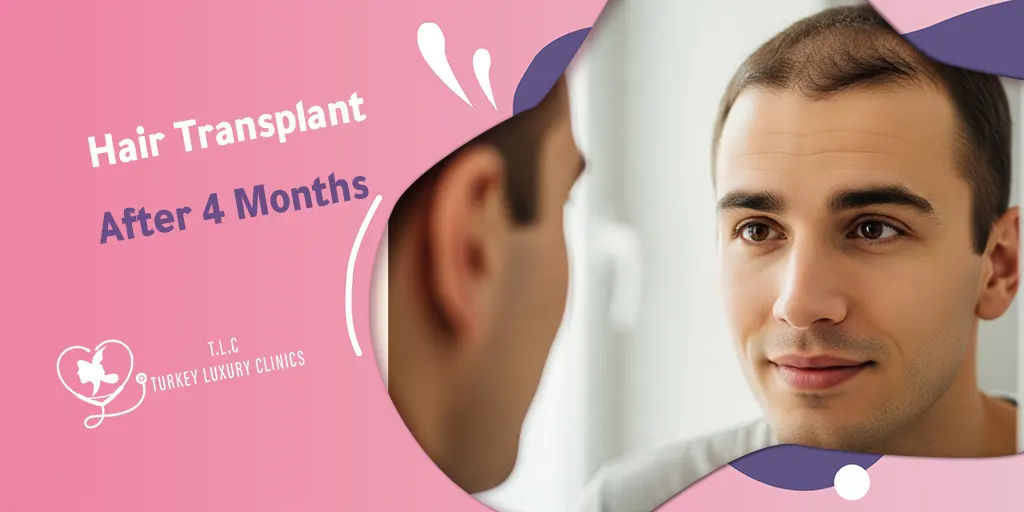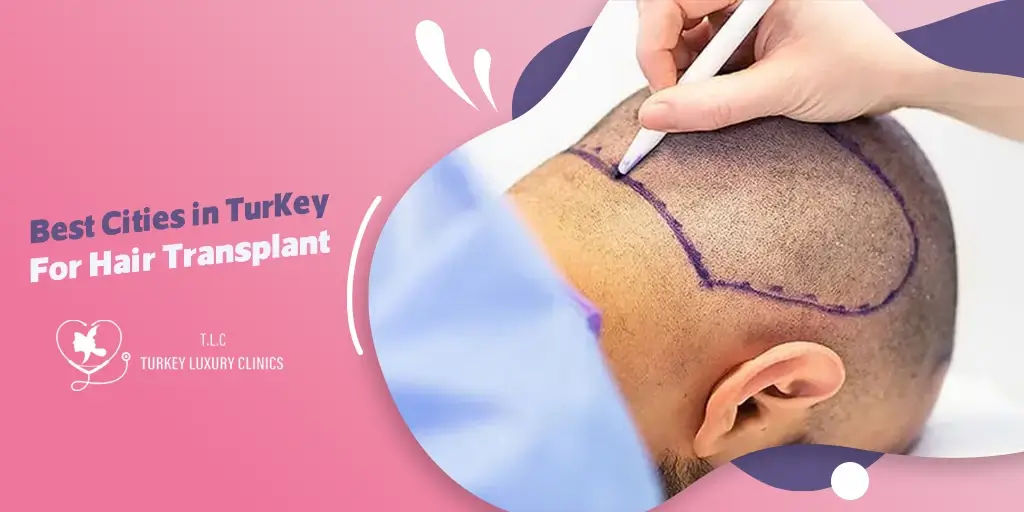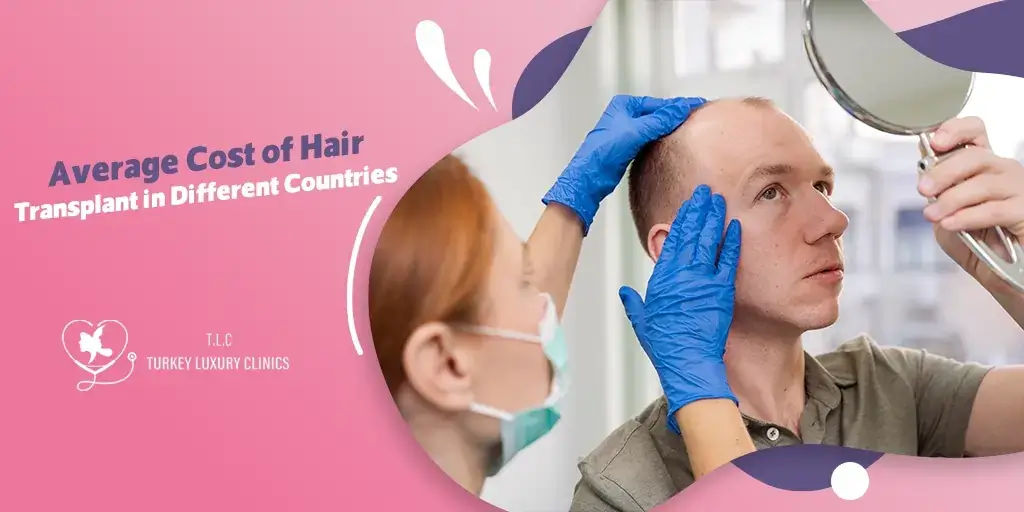- - Hair Transplant Photos After 4 Months
- - What to Expect 4 Months After Hair Transplant?
- - 4 Months After FUE Hair Transplant vs. FUT vs. FUT
- - Hair Growth and Results After 4 Months of Hair Transplant
- - Hair Growth Issues 4 Months After Hair Transplant
- - Scalp Issues 4 Months After Hair Transplant
- - Get Real Hair Transplant Results with Turkey Luxury Clinics Experts
- - FAQs About Hair Transplant After 4 Months
A hair transplant doesn’t produce instant results; the final outcome can take up to 12 months to fully appear. While the timeline varies from patient to patient, it generally follows a predictable pattern.
4 months after a hair transplant, you can expect to see the first signs of new hair growth. Any redness or swelling from the surgery usually subsides by this point, and scabs or crusts should have completely disappeared.
At Turkey Luxury Clinics, our specialists closely monitor your hair restoration journey every step of the way—whether through in-person follow-up visits or convenient online consultations. Feel free to reach out anytime for support as you progress toward your final results.
Hair Transplant Photos After 4 Months
4 months after hair transplant pictures show a progressive in the overall results with more natural look than the previous period; however, these results are widely variable between patients.
What to Expect 4 Months After Hair Transplant?
After 4 months of hair transplant, most patients have moved beyond the initial recovery phase and entered the early stages of visible growth. Regrowth typically begins with fine, delicate strands.
The shedding phase (also known as “shock loss”) usually ends by now, allowing transplanted follicles to enter the active growth phase and begin producing new hair.
Most side effects—such as redness, swelling, and scabbing—should be resolved at this point. Both the donor and recipient areas are generally well-healed, with little to no lingering inflammation or trauma. The scalp usually regains its normal texture and color, and any sensitivity is significantly reduced.
4 Months After FUE Hair Transplant vs. FUT vs. FUT
Both FUE (Follicular Unit Extraction) and FUT (Follicular Unit Transplantation) typically follow a similar pattern when it comes to early hair growth around the four-month milestone, with many patients beginning to notice fine, soft regrowth across the transplanted area.
- However, the difference between FUE hair transplant after 4 months and FUT hair transplant after 4 months becomes more apparent in the donor area. In FUE procedures, the donor zone is usually well-healed with minimal scarring due to the punch extraction technique.
In contrast, FUT patients may still observe some ongoing healing around the linear scar, which generally takes a bit longer to fully settle.
Hair Growth and Results After 4 Months of Hair Transplant
Comparing hair growth after 4 months hair transplant to the initial weeks, many patients begin to observe noticeable changes in the donor area, recipient area, and the overall scalp, with the obvious beginning of new hair appearance.
Hair transplant growth after 4 months is typically visible across the recipient area, as new hairs are often thin, soft, and may appear uneven or patchy. Their length usually ranges between 0.5 to 2 centimeters, depending on the individual growth rate.
However, it’s important to maintain realistic expectations about 4 months after hair transplant results, as the final outcome is still developing and will continue to evolve over the coming months.
Read more about: factors affecting hair transplant results
Hair Growth Issues 4 Months After Hair Transplant
It is completely normal that hair growth after 4 months transplant varies significantly between patients during the recovery period. Some individuals may begin to notice late bloomer hair transplant after 4 months, most thin hair after 4 month transplant, while others may already show more pronounced growth by that time.
However, it is not common to observe no hair growth 4 months after hair transplant.
Does it matter? Actually, you can’t determine if this is a sign of transplant failure or not before a year.
When should you visit your doctor?
It is recommended for patients who notice no results 4 months after hair transplant to visit their doctor to check whether they might benefit from boosting medications such as PRP , or hormonal therapy such as finasteride to limit the effect of DHT on the new follicles.
We advise patients strictly not to scratch their scalp, especially the scabs that formed during the initial recovery period, until full stabilization of the hair follicles.
Shock Loss 4 Months After Hair Transplant
Another issue is the continuation of shock loss during this period. While shock loss typically occurs within the first few weeks and starts to resolve by the third month, in some cases, hair fall after 4 months of hair transplant can still be observed around the fourth month.
However, if you observe excessive shedding 4 months after hair transplant or that starts suddenly or in high densities, it’s a good idea to check in with your doctor to rule out any underlying issues — but there’s usually no need for major concern, as this can still fall within the normal recovery process.
Hair Dying 4 Months After Transplant
It is generally allowed to bleach your hair once the scalp has fully healed. However, bleaching hair 4 months after hair transplant scabs may lead to irritation or even trigger new scabbing in some cases. This is because bleach is a strong chemical, and if the scalp is still soft or mildly sensitive, it might react negatively. So, even at the 4-month mark, it's better to check with your doctor or specialist before using harsh dyes or bleaches on the transplanted area.
Scalp Issues 4 Months After Hair Transplant
In hair transplant 4 months after surgery, the scalp usually looks calmer, more healed, and closer to its normal state. However, some symptoms may still appear—either lingering from earlier stages or emerging as part of the ongoing healing process.
In most cases, these issues are temporary and resolve on their own. But if they persist or worsen, it’s important to consult your doctor to rule out complications such as folliculitis, sensitivity, or scalp irritation. Here are the most common scalp issues at this stage:
1. Itchy scalp 4 months after hair transplant: Persistent itching may indicate skin dryness, product sensitivity, or even mild folliculitis.
2. Dandruff 4 months after hair transplant: Flaking can result from lingering scalp irritation, sensitivity to certain hair products, or natural skin renewal after healing.
3. Bumps on back of head 4 months after hair transplant: These often appear due to minor folliculitis or ingrown hairs and usually look like small pimples. They’re common during the early growth phase.
Get Real Hair Transplant Results with Turkey Luxury Clinics Experts
Don’t leave your hair journey to chance. At Turkey Luxury Clinics, we connect you with experienced surgeons, proven techniques, and dedicated aftercare—so you don’t just get a transplant, you get lasting, natural-looking results. Book your free consultation today and take the first step toward the hair you deserve.












.webp)
.webp)
.webp)
.webp)

